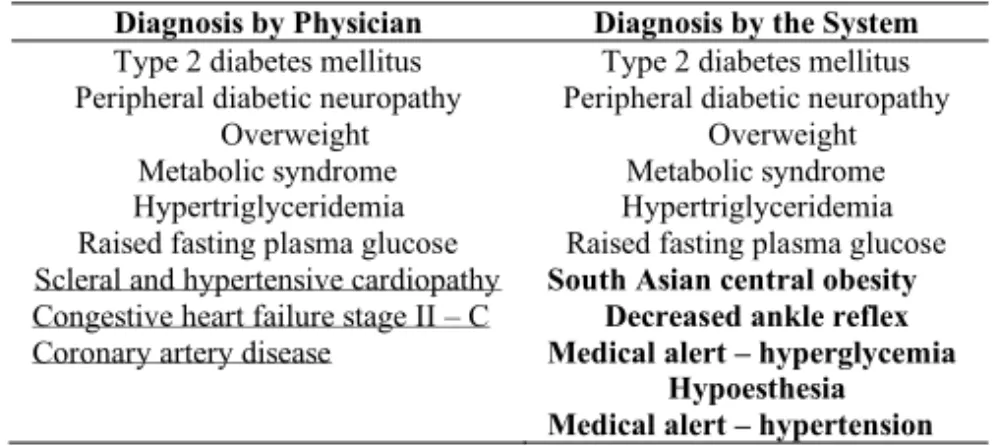Ontology-Based and Architecture-Based Method for the Development of
Interoperable Care Systems for Type 2 Diabetes Mellitus
Gustavo A. URIBE
a,b,c,1, Bernd BLOBELd
,e,f, Diego M. LOPEZ
c, Stefan SCHULZ
g, and Alonso A. RUIZ
ha
The European Organization for Nuclear Research, Geneva, Switzerland
b
Experimental High Energy Physics, University Antonio Nariño, Bogotá, Colombia
c
Telematics Engineering Research Group, University of Cauca, Popayán, Colombia
d
Medical Faculty, University of Regensburg, Regensburg, Germany
e
eHealth Competence Center Bavaria, Regensburg, Germany
f
First Medical Faculty, Charles University Prague, Prague, Czech Republic
g
Institute of Medical Informatics, Statistics and Documentation, Medical University of Graz, Graz, Austria
h
Medical Faculty, University of Cauca, Popayán, Colombia
Abstract. Processes like the care of type 2 diabetes mellitus patients require support by information systems considering the heterogeneity of the actors from different domains involved, enabling harmonization and integration of their specific methodologies and knowledge representation approaches towards interdisciplinary cooperation. Currently, the development of systems starts from the simplified information world, ignoring the aforementioned heterogeneity and specificity of real-world processes. This paper aims to demonstrate the feasibility of developing an adaptive, interoperable and intelligent system that supports the major aspects of type 2 diabetes mellitus care based on the Generic Component Model as formal methodology for modelling universal systems. The result is a deployable solution based on a formal representation of the diabetes care system, its objectives, and the intended business process. The implemented system enables reasoning over the data, inferring medical diagnosis. The effectiveness of the inference was evaluated, obtaining an F-measure of 0.89. The methods presented in this paper helps to build high quality models based on computation-independent aspects, which enable the construction of knowledge-based adaptive, intelligent and interoperable eHealth systems.
Keywords. Diabetes mellitus, Health information management, Ontology-based Systems, Systems architecture, Knowledge-based systems
1. Introduction
Currently, numerous software applications have been developed and implemented to support health care services. Few of them aim at achieving data interoperability, mapping
1
